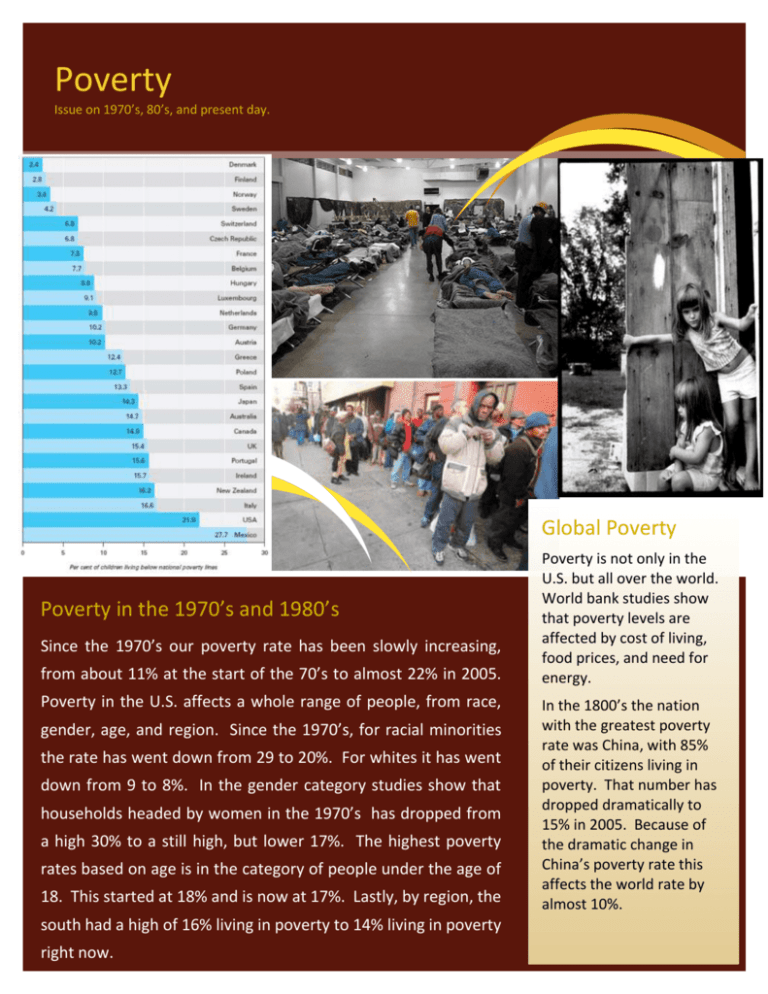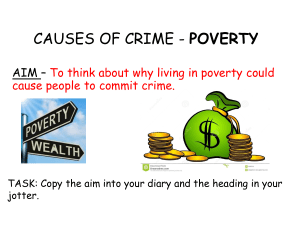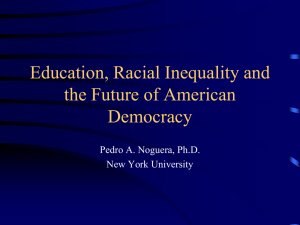cities vs country
advertisement

Poverty Issue on 1970’s, 80’s, and present day. Global Poverty Poverty in the 1970’s and 1980’s Since the 1970’s our poverty rate has been slowly increasing, from about 11% at the start of the 70’s to almost 22% in 2005. Poverty in the U.S. affects a whole range of people, from race, gender, age, and region. Since the 1970’s, for racial minorities the rate has went down from 29 to 20%. For whites it has went down from 9 to 8%. In the gender category studies show that households headed by women in the 1970’s has dropped from a high 30% to a still high, but lower 17%. The highest poverty rates based on age is in the category of people under the age of 18. This started at 18% and is now at 17%. Lastly, by region, the south had a high of 16% living in poverty to 14% living in poverty right now. Poverty is not only in the U.S. but all over the world. World bank studies show that poverty levels are affected by cost of living, food prices, and need for energy. In the 1800’s the nation with the greatest poverty rate was China, with 85% of their citizens living in poverty. That number has dropped dramatically to 15% in 2005. Because of the dramatic change in China’s poverty rate this affects the world rate by almost 10%. Crimes in the 70’s and 80’s Crime is an action or an instance of negligence that is deemed injurious to the public welfare or morals or, to the interests of the state and that is legally prohibited. Many people were scared to go outside during the 70’s because they were afraid of getting robbed, raped or seriously injured. As a result they created the Crime present day Organized Crime Control Act of 1970. It strengthened the ability of the federal government to combat and prosecute criminal organizations. It provided for Special Grand Juries to investigate multi-jurisdictional organized crime; these grand juries are able to produce reports outlining public corruption and organized crime conditions in their respective districts. Organized Crime Control Act of 1970 created the Racketeer Influenced and Corrupt Organizations Act. Many viewed RICO as the single most important piece of organized crime legislation enacted During the 1980s’s there was an increase in the rate of criminal violence greater than that of the previous year. It is seen to appear immediately after each of the four military episodes of the 1980s, but not at any other time that crime rates would increase. Organized crime in today’s world has a major effect on our economy and our national security. Organized crime over the years has taken an increasing trail. With more open borders and the expansion of the Internet, criminals endanger the United States not only from within the borders, but beyond. People are scared of the crimes going on in the world and there are some pole that are afraid to leave their homes. Many people are worried now about the results of crime and the effects of it on our economy. Kristin M. Finklea an analyst in Domestic Security said criminals “fraudulent activities in the domains of strategic commodities, credit, insurance, stocks, securities, and investments could weaken the alreadytroubled financial and housing markets.” Gentrification is the process in which the process of renewal and rebuilding accompanying the influx of into deteriorating areas that often displaces poorer residents. Here’s how it works; A rundown and depopulated area with an attractive neighborhood, solid housing stock, well laid-out streets — is discovered by artists, graduate students and other bohemians. Gentrification is Gentrification in the United States the process in which the process Block block, the neighborhood Block by block,by the neighborhood changes. The newcomers fix upchanges. old buildings. New big market names build restaurants and shops while the neighborhood stores leave. City services improve. Property values rise, followedof by property taxes and and rents. renewal The newcomers fix up old buildings. New big Usually then people who used to live in this neighborhood have to leave because it is too expensive. As a result the process rebuilding continues. Gentrification has been a major issue in the U.S since the 1970’s and 80’s. Gentrification was motivated in the 1970’s market names build restaurants and shops by high gasoline prices and suburban sprawl and a new taste for old architecture. During the mid-1970’s a few houses, and accompanying the neighborhoods that went through this process, but that all changed in the 1980’s. Gentrification became “a systematic attempt while the neighborhood stores leave. City to remake central cities” and “to take it back from the working class, minorities, homeless people, and immigrants” influx of intosaid Neil Smith, a professor improve. at City University Property of New York. values rise, services deteriorating areas followed by property taxes and rents. that often displaces Usually then people who used to live in this poorer residents. Here’s how it neighborhood have to leave because it is too works; A rundown expensive. As a result the process continues. and depopulated Gentrification has been a major issue in the area with an U.S since the 1970’s and 80’s. Gentrification attractive was motivated in the 1970’s by high gasoline neighborhood, prices and suburban sprawl and a new taste solid housing stock, for old architecture. During the mid-1970’s a well laid-out streets few houses, and neighborhoods that went — is discovered by through this process, but that all changed in artists, graduate students and other the 1980’s. Gentrification became “a bohemians. systematic attempt to remake central cities” and “to take it back from the working class, minorities, homeless people, and immigrants” said Neil Smith, a professor at City University of New York. http://www.policyalmanac.org/social_welfare/poverty.shtml http://money.cnn.com/2011/09/13/news/economy/poverty_rate_income/index.htm http://www.prb.org/Articles/2007/USRacialEthnicAndRegionalPoverty.aspx http://www.irp.wisc.edu/publications/dps/pdfs/dp129905.pdf http://sitemaker.umich.edu/salas.356/usa_vs._world http://www.globalissues.org/article/4/poverty-around-the-world http://www.poverty.com/internationalaid.html http://www.fas.org/sgp/crs/misc/R40525.pdf, http://jiv.sagepub.com/content/9/1/109.short, http://filipspagnoli.files.wordpress.com/2008/08/incarceration-rates-us-and-rest-of-theworld.jpg?w=527&h=770,http://www.usatoday.com/news/nation/2005-04-19-gentrification_x .htm,http://blogs.seattleweekly.com/dailyweekly/2011/12/why_todays_occupy_seattle_prot.php









